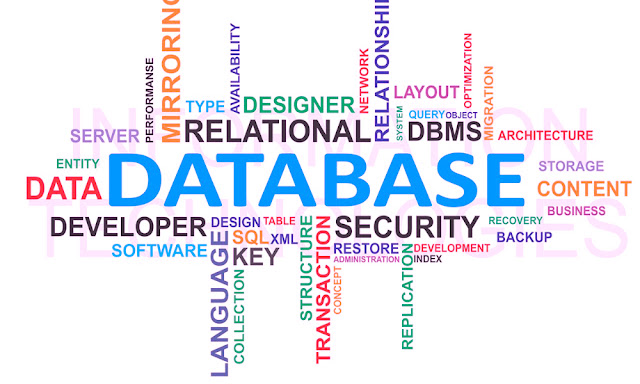A database is an accumulation of data that is composed with
the goal that it can be effortlessly gotten to, overseen and refreshed. Information
is sorted out into lines, sections, and
tables, and it is ordered to make it less demanding to discover applicable
data. Information gets refreshed, extended and erased as new data is included.
Databases handle workloads to make and refresh themselves, questioning the
information they contain and running applications against it.
PC databases regularly contain conglomerations of
information records or documents, for example, deals exchanges, item lists and
inventories, and client profiles. Normally, a database chief furnishes clients
with the capacity to control read/compose get to, indicate report era and
dissect utilization. A few databases offer ACID (atomicity, consistency,
confinement and sturdiness) consistency
to ensure that information is steady and that exchanges are finished.
Databases are pervasive in huge centralized computer
frameworks, but on the other hand are available in littler dispersed
workstations and midrange frameworks, for example, IBM's AS/400 and PCs.
Development Of Databases
Databases have developed since their initiation in the
1960s, start with various leveled and system databases, through the 1980s with
question situated databases, and today with SQL and NoSQL databases and cloud
databases.
In one view, databases can be grouped by substance sort:
bibliographic, full content, numeric and pictures. In figuring, databases are
here and there ordered by their authoritative approach. There are a wide range
of sorts of databases, running from the most pervasive approach, the social
database, to an appropriated database, cloud database or NoSQL database.
Social Database
A social database, developed by E.F. Codd at IBM in 1970, is
a forbidden database in which information is characterized with the goal that
it can be revamped and gotten to in various diverse ways.
Social databases are comprised of an arrangement of tables
with information that fits into a predefined class. Each table has no less than
one information classification in a segment, and each line has a specific
information case for the classes which are characterized in the segments.
Standard Query Language (SQL) is the standard client and
application program interface for a social database. Social databases are
anything but difficult to amplify, and another information class can be
included after the first database creation without requiring that you adjust
all the current applications.
Circulated Database
A circulated database is a database in which bits of the
database are put away in various physical areas, and in which preparing is
scattered or imitated among various focuses in a system.
Conveyed databases can be homogeneous or heterogeneous. All
the physical areas in a homogeneous appropriated database framework have the
same fundamental equipment and run the same working frameworks and database
applications. The equipment, working frameworks or database applications in a
heterogeneous conveyed database might be diverse at each of the areas.
Cloud Database
A cloud database is a database that has been streamlined or
worked for a virtualized situation, either in a half and half cloud, open cloud
or private cloud. Cloud databases give advantages, for example, the capacity to
pay for capacity limit and transmission capacity on a for each utilization
premise, and they give adaptability on request, alongside high accessibility.
A cloud database additionally gives endeavors the chance to
bolster business applications in a product as an
administration sending.
Nosql Database
NoSQL databases are helpful for huge arrangements of
circulated information. NoSQL databases are successful for enormous information
execution issues that social databases aren't worked to fathom. They are best
when an association must investigate huge pieces of unstructured information or
information that are put away over
different virtual servers in the cloud.
Question Arranged
Database
Things made utilizing object-situated programming dialects
are frequently put away in social databases, yet protest arranged databases are
appropriate for those things.
A question situated database is sorted out around items as
opposed to activities, and information instead of rationale. For instance, a
sight and sound record in a social database can be a perceptible information
question, rather than an alphanumeric esteem.
Chart Database
A chart arranged database, or diagram database, is a sort of
NoSQL database that utilization diagram hypothesis to store, guide and inquiry
connections. Chart databases are essentially accumulations of hubs and edges,
where every hub speaks to a substance, and each edge speaks to an association
between hubs.Chart databases are developing in prominence for dissecting
interconnections. For instance, organizations may utilize a chart database to
mine information about clients from online networking.
Getting To The
Database: DBMS And RDBMS
A database administration framework (DBMS) is a kind of
programming that permits you to characterize, control, recover and oversee
information put away inside a database.A social database administration framework (RDBMS) is a kind
of database administration programming that was created in the 1970s, in view
of the social model, is still the most prominent approach to deal with a
database.
Microsoft SQL Server, Oracle Database, IBM DB2, and MySQL are the top RDBMS items
accessible for big business clients. DBMS started in the 1960s to bolster
various leveled databases, and they incorporate IBM's Information Management
System and CA's Integrated Database Management System.
